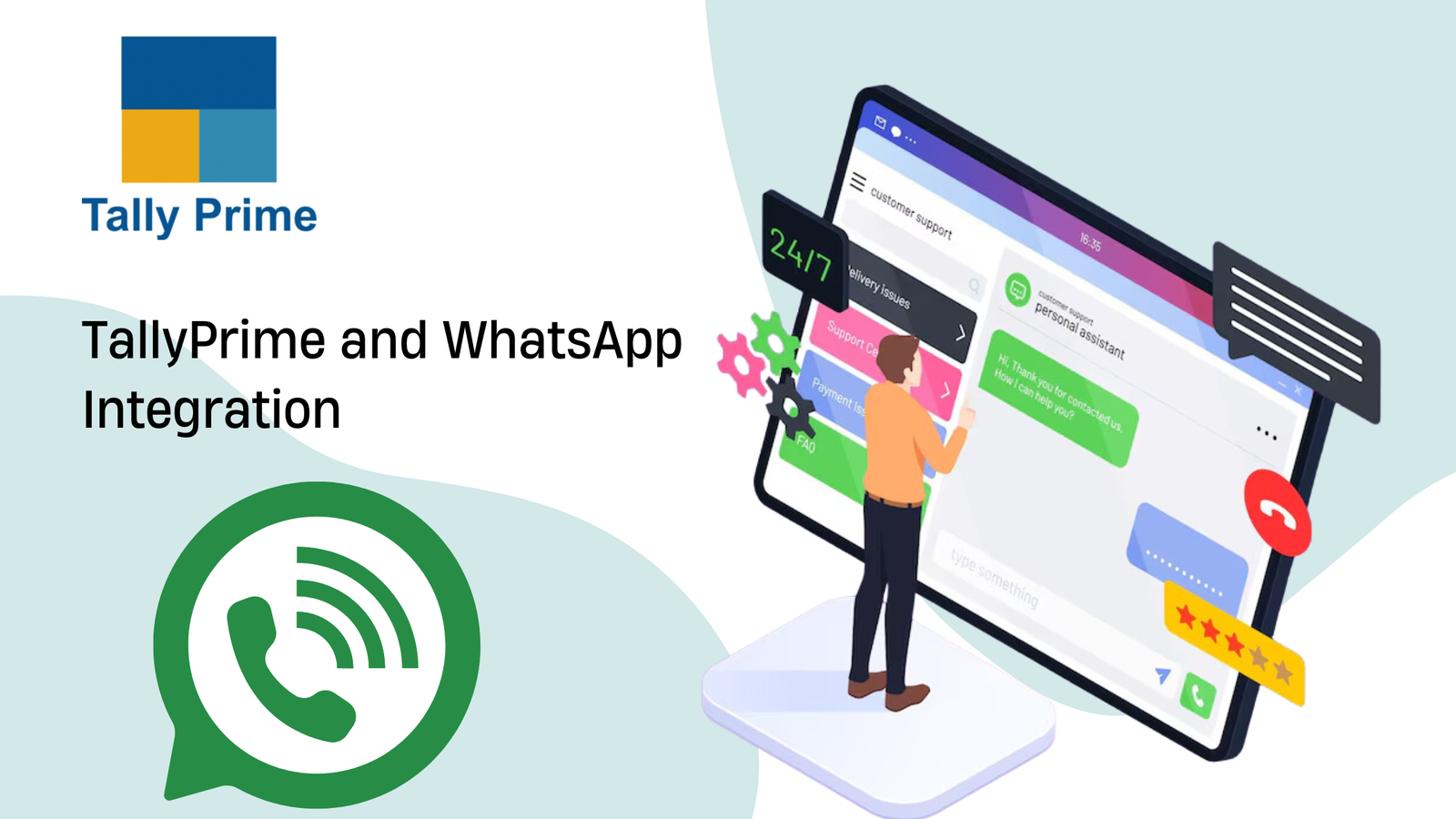How to Integrate Tally with WhatsApp
I. Introduction
A. Tally is a leading accounting software widely used by businesses for financial management and reporting. WhatsApp, a popular messaging platform, facilitates instant communication globally. Integrating Tally with WhatsApp enables businesses to streamline communication, automate notifications, and enhance customer engagement, improving overall efficiency and productivity.
B. Integrating Tally with WhatsApp empowers businesses by facilitating real-time communication, streamlined workflows, and enhanced customer engagement. This integration enables businesses to effortlessly share transaction updates, receive instant queries, and automate notifications, ultimately fostering efficiency, transparency, and stronger relationships with customers, suppliers, and stakeholders.
II. Understanding Tally and WhatsApp Integration
A. Integrating Tally with WhatsApp offers myriad benefits for businesses. It enhances communication efficiency by providing a familiar platform for real-time updates and customer engagement. Automation features streamline processes, such as transaction notifications, while fostering stronger client relationships. This integration fosters a seamless and agile operational environment.
B. Before starting the integration process, ensure you have a licensed version of Tally software installed. Additionally, you'll need access to the internet and administrative privileges to configure settings. Familiarity with basic API concepts and a registered WhatsApp Business account are also essential prerequisites for seamless Tally WhatsApp integration.
III. Setting Up APIs
A. Introduction to APIs (Application Programming Interfaces): APIs serve as bridges between different software systems, allowing them to communicate and share data seamlessly. They enable developers to access specific functionalities or data from one application to use in another, facilitating integration, automation, and the creation of innovative software solutions.
B. When selecting the API for Tally WhatsApp integration, ensure compatibility with Tally's data structure and WhatsApp's Business API requirements. Look for an API that offers robust features like real-time data synchronization, message automation capabilities, and reliable support. Compatibility and functionality are key for seamless integration and efficient communication workflows.
C. To obtain API credentials from Tally, navigate to the Tally ERP platform and access the settings or integration section. Locate the API settings and follow the prompts to generate API keys or credentials. These credentials typically include an API key, secret key, and possibly other authentication parameters required for integration with external platforms like WhatsApp.
D. Registering for WhatsApp Business API involves submitting an application through the WhatsApp Business API Provider, providing business details, and agreeing to WhatsApp's terms and conditions. Once approved, you'll receive access to the API and documentation, enabling integration with Tally for efficient business communication and automation.
IV. Configuring Settings in Tally
A. To access Tally settings for integration, navigate to the configuration menu within the Tally software. From there, locate the section specifically designated for integration settings. This is where you can enable API access and configure parameters necessary for integrating Tally with external platforms like WhatsApp.
B. Configuring Tally to enable API access involves navigating to the settings menu within Tally, locating the API configuration section, and enabling the necessary permissions. This allows Tally to communicate with external applications and services, facilitating seamless integration with platforms like WhatsApp for streamlined business processes.
C. Setting up data synchronization between Tally and WhatsApp involves configuring settings in both platforms to ensure seamless transfer of information. This process enables automatic updates on transactions, inventory, and customer interactions from Tally to WhatsApp, enhancing communication efficiency and providing real-time insights for businesses.
V. Implementing Automation Features
A. Setting up automated notifications for transactions involves configuring Tally to send real-time alerts to designated recipients via WhatsApp whenever a transaction occurs. This ensures stakeholders are promptly informed about financial activities, enhancing transparency and facilitating quick decision-making within the organization.
B. Configuring auto-responses for customer queries involves setting up predefined messages to automatically reply to customer inquiries on WhatsApp. By customizing responses based on common queries, businesses can provide instant support, enhance customer satisfaction, and streamline communication processes, improving overall efficiency and responsiveness.
C. Automating report generation and distribution through WhatsApp streamlines business processes by enabling the automatic creation and dissemination of reports to designated recipients. By configuring integration settings, reports can be generated based on predefined parameters and seamlessly delivered to stakeholders via WhatsApp, saving time and ensuring timely access to vital information.
VI. Testing and Troubleshooting
A. Before finalizing the integration, conduct test runs to verify seamless functionality. Send sample transactions and queries to simulate real-world scenarios, ensuring that Tally data syncs accurately with WhatsApp. Address any glitches or discrepancies encountered during testing to guarantee a smooth and reliable integration process.
B. In troubleshooting common integration issues, identify mismatched API credentials, ensuring proper configuration of data synchronization settings, and checking for compatibility issues between Tally and WhatsApp APIs. Additionally, verify network connectivity and examine error logs for insights. Seek support from Tally and WhatsApp developer communities for resolving complex issues effectively.
VII. Conclusion
Seamless communication in modern businesses is vital for fostering collaboration, enhancing productivity, and maintaining customer satisfaction. It ensures that teams can exchange information effortlessly, respond promptly to inquiries, and adapt quickly to changes in the market. Effective communication forms the backbone of successful operations and promotes growth and innovation.



